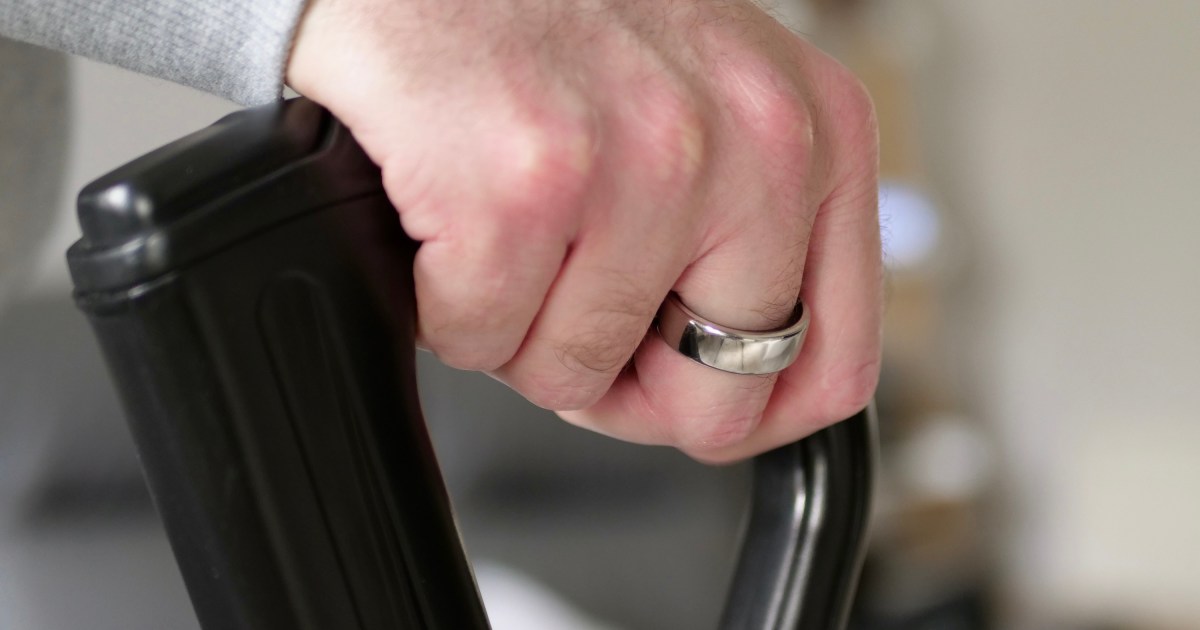The Oura Ring has a workout mode I’ve not seen on any other fitness wearable, and because it’s paired with one of the most accurate auto-workout recognition systems I’ve tried, it has become one of my favorite features.
No, it doesn’t recognize weight lifting, dodgeball, or specific yoga poses; it recognizes housework, and it should be standard on every single activity-focused wearable out there.
Housework, really?
Think about your average day before you dismiss a housework mode as “not a real workout.” Cleaning, vacuuming, changing the bed, doing the washing, and various other tasks — especially when performed briskly and back-to-back — raise your heart rate and require full body movement. Depending on the size of your house or thoroughness, it can take quite a time, too. To me, it’s as much of a valid period of exercise as an afternoon walk, which is tracked by just about every wearable you strap to your wrist.
Yet housework is a rare find in the usually extensive lists of exercises that include things like mountain climbing, downhill skiing, and motor racing. I’m willing to bet only a few of you have done any of these during the last week, but almost everyone reading has picked up a duster or given the bathroom a scrub. Why shouldn’t it count towards your daily goal? The answer is, of course, that it should, and Oura absolutely knows it.
But the stroke of genius is not that it’s an option; it’s that you don’t have to do anything for it to appear in the app. The Oura Ring uses an accurate workout recognition system that seems to know when you’re doing housework instinctively and automatically tracks it for you without any need to open the app. This is what’s transformative, as if it was a manual process — like it is when climbing a mountain — I’d never remember to track it because it’s a mundane chore, not an activity.
How Oura’s housework tracking works
The automatic housework recognition mode seemed to arrive on the Oura Ring silently last year, as it suddenly started appearing in the app. Workout tracking has never been the Oura Ring’s strong point, and in the past, I’ve complained about Oura not including a general workout mode alongside its walking, running, and cycling options. That said, I’d have been quiet if I knew housework was on the task list instead. I can live with manually letting the Oura Ring know I’ve been working out if it also accurately counted the calories I burned cleaning the house all afternoon.
But is it over-estimating or blowing your level of exertion out of proportion, thus making it too easy to reach your daily goal? I don’t think so. Thirty minutes of housework usually racks up between 50 and 60 calories burned, depending on your heart rate. You also have to agree to add the housework activity to your daily exercise in the app; it’s possible to alter the length of time it thinks the activity took or even dismiss it entirely. You can also change the definition of the activity, and there’s even a similar “yard work” mode which isn’t automatically tracked, if you feel that fits better.
I love that the Oura Ring recognizes my efforts.
Oura isn’t out to help you artificially pad your daily movement — it’s out to provide a more accurate picture of what you do. It means the housework mode never feels like cheating and won’t ever push you past your daily goal too easily. Trust is very important when using a fitness tracking wearable, and in the same way, you don’t want it to miss any movement or activity, you also don’t want it to suddenly start adding in things you feel may not really count. The balance of auto-tracking, sensible calorie burn estimates, and complete control over how it’s added to your tally makes the feature usable and trustworthy.
Why it’s actually an important feature
If the housework tracked by the Oura Ring isn’t usually substantial enough to make a huge difference to your daily scores, why do I think it’s important? It’s about validation. I love that the Oura Ring recognizes my efforts, as a period of intense cleaning and housework is sometimes followed by a cup of tea or a bit of a break. When this happens, it means I’ve worked fairly hard, and it’s great to see an activity tracker notice my effort and agree.
The Oura Ring is a “friendly” wearable already. The app presents data in a clear fashion, and the emphasis is never on hardcore exercise or pushing yourself to the limit. Instead, it’s about maintaining a healthy lifestyle by tracking movement, exercise, sleep, and recovery. You won’t find VO2 Max data because it’s not what the Oura Ring is about. But it is about staying active, however you may do that. It’s why I still think the smart ring is ideally paired with a smartwatch, where specific activities and workouts are more effectively tracked, ensuring all your bases are covered.
When I get closer to my daily movement goal, it makes me feel better about myself, and I’ll happily take any legitimate measurement that helps me reach it. I feel the Oura Ring has a better overview of what I do through its housework tracking and should therefore return more useful information regarding my sleep and recovery.
More wearables need this
Whether it’s the Apple Watch Series 9, the Google Pixel Watch 2, the Samsung Galaxy Watch 6 Classic, or even other smart rings like the Ultrahuman Ring Air, nothing else has automatically tracked efforts to keep the house clean. It’s another reason the Oura Ring is our recommended smart ring to buy, and I’d love to see housework become a standard feature on most other fitness and activity wearables we’re expected to wear 24 hours a day.
Now, Oura just needs to add an automatically tracked car wash mode, and I’ll be completely sorted.
Editors’ Recommendations


